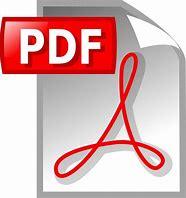| Author(s) |
Subtheme Group |
| Abstract |
The disruptive technologies EINA sub-theme is intended to highlight technologies and options that may significantly disrupt the energy system. By their nature, disruptive innovations are difficult to anticipate, and this report is therefore an exercise in exploring ranges of uncertainty. This EINA report follows a different structure and has a different purpose to the other sub-themes. Instead of prioritising ‘disruptive’ innovations, the report highlights potential sources of disruption and how these could significantly change the innovation priorities across the energy system. The report provides two key outputs: • A description of potentially disruptive innovations and their impact on the energy system. • An analysis of the impact of disruptions on our innovation prioritisation, highlighting where innovations are likely to become significantly more or less important. We define disruptive innovations as any innovation or other shock which moves the UK energy system substantially away from our central scenario. Throughout the EINA sub-themes, innovations are prioritised to reflect their importance to the energy system to 2050. Using a central scenario as an anchor, the EINA sub-themes can estimate the importance of innovation in a given technology. For example, the system benefits of innovation (and cost reductions) in hydrogen fuel cells are quantified given a central expectation of the cost of hydrogen in the energy system.2 If hydrogen costs turn out much lower than expected (and hence fuel cells are more widely deployed) innovation in fuel cells could become significantly more valuable than expected in our central scenario. As a rough benchmark, any innovation which shifts 10% of primary energy demand (or reduces energy demand altogether) is considered as disruptive. |
| Download |
Energy Innovation Needs Assessment. Sub-theme report on Disruptive technologies (2019)  |
| Year |
2019 |
| Status |
Current |
| Timescale |
No Data Supplied |
| Geographic Coverage |
UK |
| Funder |
BEIS |
| Methods |
Desk research and stakeholder enagagement |
| Stakeholder |
Academic community, industry and government |
| Document Structure |
No Data Supplied |
| Rights |
OGL 3.0 |
|